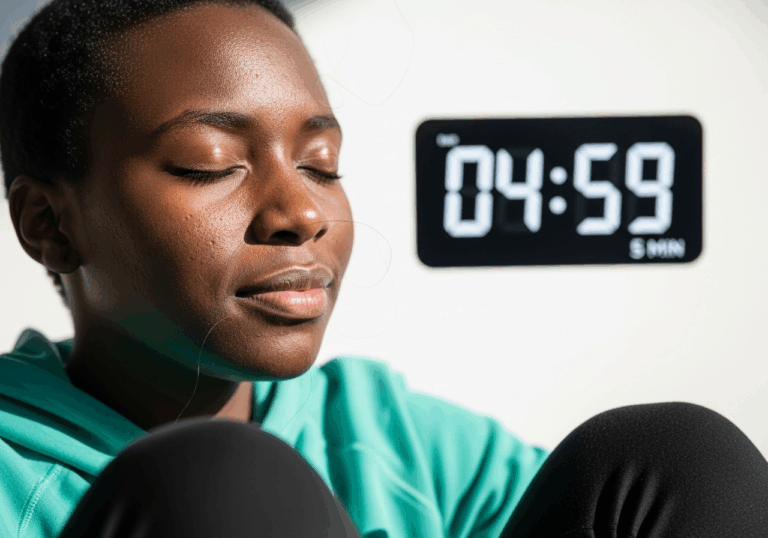Science-Backed Tips
Boost Your Mood with 6 Minutes of Breathing
Experience a 15% increase in heart rate variability power.
📊 Did you know?
💡 Why It Matters
1️⃣
Improving HRV by 15% can lead to better stress management and emotional regulation.
2️⃣
Enhanced vagal activation may reduce anxiety symptoms, improving overall mental health.
3️⃣
Short, effective breathing exercises can be easily integrated into daily routines for immediate benefits.
✅ Try These Micro-Tips
🎯
Practice resonance breathing for 6 minutes daily to enhance mood.
🎯
Use biofeedback tools to monitor HRV during breathing sessions.
🎯
Incorporate deep breathing exercises before stressful situations for immediate relaxation.
🎯
Aim for at least one session per day to maintain improved HRV levels.
📚 The study
The objective of the study was to test the acute effects of heart rate variability biofeedback (HRVB), and the results were promising. Participants engaged in a short, six-minute breathing exercise that utilized biofeedback, leading to a remarkable 15% increase in high-frequency (HF) power.
This increase in HF power is associated with improved baroreflex gain, which plays a vital role in regulating our body’s response to stress. The significance of these findings cannot be overstated; even a short dose of breathing exercises can yield quick relaxation and enhance mood portability.
By improving heart rate variability (HRV) by 15%, individuals can experience better stress management and emotional regulation. Enhanced vagal activation during these sessions may also help reduce anxiety symptoms, contributing to overall mental health improvement.
The beauty of this approach lies in its simplicity—short, effective breathing exercises can be seamlessly integrated into daily routines, offering immediate benefits. Whether you’re at work, home, or on the go, taking just a few minutes to focus on your breath can transform your mood and enhance your well-being.
❓ Frequently Asked Questions ❓
Learn more
What is resonance breathing?
Resonance breathing is a technique that involves controlled breathing patterns to enhance heart rate variability (HRV). It typically focuses on slow, deep breaths to promote relaxation and improve emotional regulation.
How long should a resonance breathing session last?
A single resonance breathing session should last about 6 minutes. This duration is effective for enhancing mood and increasing HRV HF power.
What is HRV HF power?
HRV HF power refers to the high-frequency component of heart rate variability, which is associated with parasympathetic nervous system activity. An increase in HRV HF power indicates better emotional regulation and relaxation.
How does resonance breathing improve mood?
Resonance breathing enhances mood by activating the vagus nerve, which promotes relaxation and reduces stress. This activation can lead to a measurable increase in HRV HF power.
Can resonance breathing help with anxiety?
Yes, enhanced vagal activation from resonance breathing may reduce anxiety symptoms. Regular practice can contribute to improved overall mental health.
How can I incorporate resonance breathing into my daily routine?
You can easily integrate resonance breathing by setting aside 6 minutes each day for the practice. Consider using biofeedback tools to monitor your HRV during these sessions for better results.
What are the immediate benefits of resonance breathing?
Immediate benefits of resonance breathing include quick relaxation and improved mood. It can also enhance your ability to manage stress effectively.
How often should I practice resonance breathing?
It is recommended to practice resonance breathing at least once a day to maintain improved HRV levels. Consistent practice can lead to long-term benefits for emotional regulation.
What tools can I use to monitor HRV during breathing sessions?
Biofeedback tools, such as heart rate monitors or smartphone apps, can be used to track HRV during breathing sessions. These tools provide real-time feedback to help you optimize your practice.
Can resonance breathing be used before stressful situations?
Yes, incorporating deep breathing exercises before stressful situations can provide immediate relaxation. This practice can help you manage anxiety and improve your response to stress.





